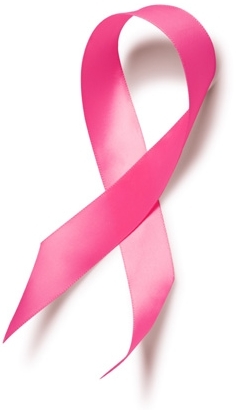 Even though significant amounts of research have been conducted on cancer over the last few decades, we still have little idea as to how to prevent the disease or treat it after it develops. Pterostilbene was noted early on as having an anti-cancer effect when applied to a variety of different types of cancer cells grown in cultures in the laboratory. Since pterostilbene primarily acts as a potent protector against oxidative stress, this result may seem surprising.
Even though significant amounts of research have been conducted on cancer over the last few decades, we still have little idea as to how to prevent the disease or treat it after it develops. Pterostilbene was noted early on as having an anti-cancer effect when applied to a variety of different types of cancer cells grown in cultures in the laboratory. Since pterostilbene primarily acts as a potent protector against oxidative stress, this result may seem surprising.
The PI3 K/AkT/NK-κB pathway and pterostilbene
When applied to a variety of breast cancer cell lines, pterostilbene inhibits their growth; however, it does not inhibit the growth of non-cancerous breast cell lines (1). When cancer cell lines are implanted in a mouse model of breast cancer, feeding the mice pterostilbene blocks the ability of the cells to develop into tumors. Researchers investigating the mechanism behind these effects have found that pterostilbene affects a number of signalling pathways known to be important for tumor development and metastasis. One of these pathways is the PI3 K/AkT/NK-kB signalling pathway. The activity of this pathway in cancer cells is markedly down-regulated in response to pterostilbene. This particular pathway is important for cancer cells to evade apoptosis, resist treatment, and continue to grow. Inhibition of this pathway is a target of pharmaceutical research into cancer treatments.
Apoptosis and pterostilbene
Apoptosis, or programmed cell death, is one of the body’s prime mechanisms of protecting itself against cancer. When cells become damaged, dislodged, or mutated, the body sends signals to them telling them to undergo a precisely regulated suicide program. An important step in the development of cancer is for the emerging tumor cells to come up with some mechanism for evading apoptosis. When a variety of different types of cancer cells are treated with pterostilbene, including colon, lung, breast, and prostate cancer cells, they undergo apoptosis (2)(3)(4)(5). This mechanism appears to be mediated through the ability of pterostilbene to alter the oxidative state of the cell. Pterostilbene induces the mitochondrial membranes of cancer cells to depolarize, resulting in the production of superoxides and peroxides, leading to cell death (6). Based on this study and other studies, the researchers speculate that although pterostilbene acts to protect normal cells from oxidative damage, when placed in the abnormal metabolism of cancer cells, it acts to induce oxidative damage and thereby mediate cancer cell death.
Implications for chemotherapy and radiation therapy
Most cancer treatments exert the majority of their cancer-killing via induction of apoptosis. When the cells develop ways of blocking apoptosis, the treatments become less or completely ineffective. In one exciting study, combining tamoxifen (one of the most widely used treatments for breast cancer) with pterostilbene significantly enhanced the ability of the tamoxifen to kill the cancer cells (7). This effect is thought to be due to its ability to promote apoptosis of cancer cells.
Prevention of cancer
It’s always better to prevent diseases than to get them and then treat them. Pterostilbene may have tremendous potential in preventing the development of cancer in the first place. When rats are treated with carcinogens and then given pterostilbene, they experience a significant reduction in the number of tumors that develop (8). These effect is thought to be primarily due to pterostilbene’s ability to protect cells against oxidative stress. It may also be due to pterostilbene’s ability to push damaged cells into apoptosis, preventing them from developing into tumors. Colon and gastric cancers in people seem to be caused by a complex pathway involving chronic inflammation and oxidative stress. Pterostilbene is able to reduce both oxidative stress and chronic inflammation, and may therefore be a feasible way to reduce the risk of developing these gastrointestinal cancers. Although this theory has not been directly tested, diets high in fruits and vegetables, which contain natural anti-inflammatory and antioxidant agents are known to be quite protective against gastrointestinal cancers, and possibly other cancers (9). Pterostilbene is one of the most bioavailable and potent of these agents, and when taken regularly in a concentrated form, it may provide significant protection against the development of many types of cancer.
Pterostilbene’s far-reaching effects seem to be due to its ability to correct malfunctioning metabolic and physiological degenerative processes. In many studies, its effects are found to be different, but all are focused on correcting the specific disease process that is going on. It up-regulates or down-regulates specific pathways depending on the disease process, but always acting to correct the problem. Studies of pterostilene as a cancer treatment and preventative agent are only in the early phases, but the results so far seem very promising.
References:
1. J Nutr. 2011 Oct; 141(10): 1805–1812. Published online 2011 Aug 31. doi: 10.3945/jn.111.140178
2. J Agric Food Chem. 2011 Oct 26;59(20):10964-70. doi: 10.1021/jf202846b. Epub 2011 Sep 29.
3. J Surg Res. 2010 Jun 1;161(1):18-22. doi: 10.1016/j.jss.2009.06.027. Epub 2009 Jul 21.
4. Am J Transl Res. 2012; 4(1): 44–51.Published online 2012 Jan 5.
5. PLoS One. 2013;8(3):e57542. doi: 10.1371/journal.pone.0057542. Epub 2013 Mar 1.
6. J Surg Res. 2010 Jun 15;161(2):195-201. doi: 10.1016/j.jss.2009.07.027. Epub 2009 Aug 18.
7. Am J Surg. 2010 Nov;200(5):577-80. doi: 10.1016/j.amjsurg.2010.07.022.
8. Pharm Res. 2010 Jun;27(6):1138-45. doi: 10.1007/s11095-010-0102-1. Epub 2010 Mar 16
9. Planta Med. 2008 Oct;74(13):1635-43. doi: 10.1055/s-0028-1088301. Epub 2008 Oct 8.

Leave a comment